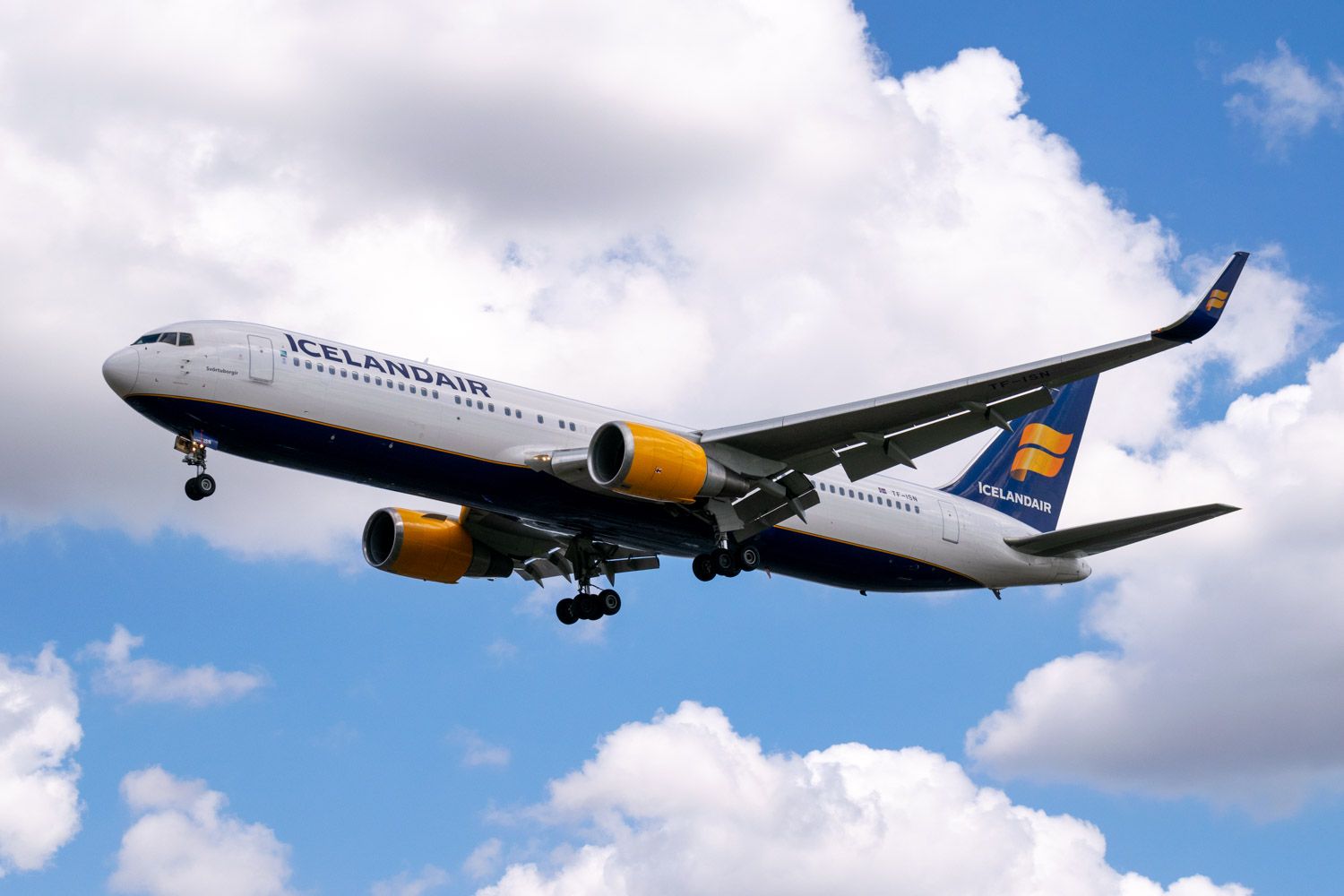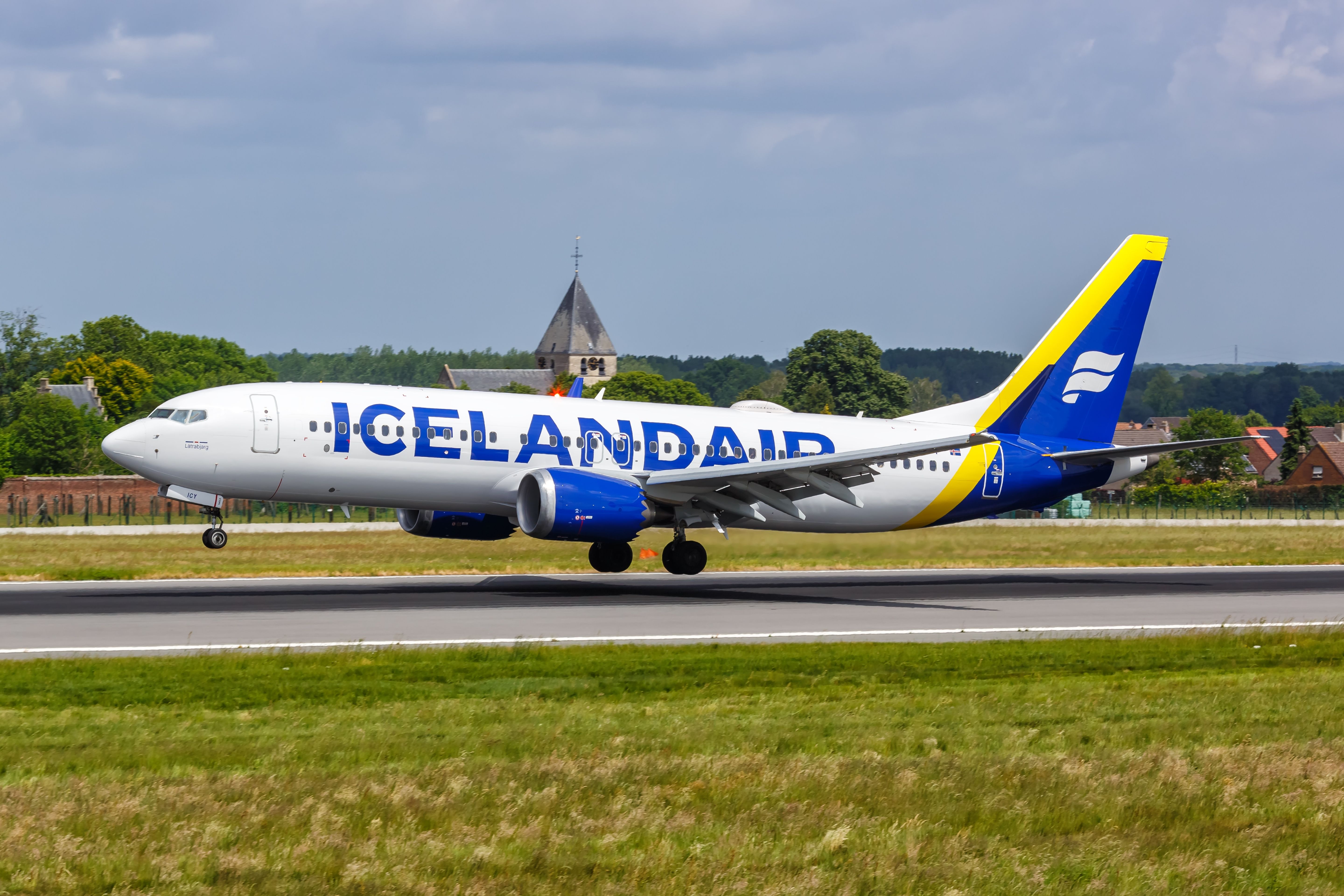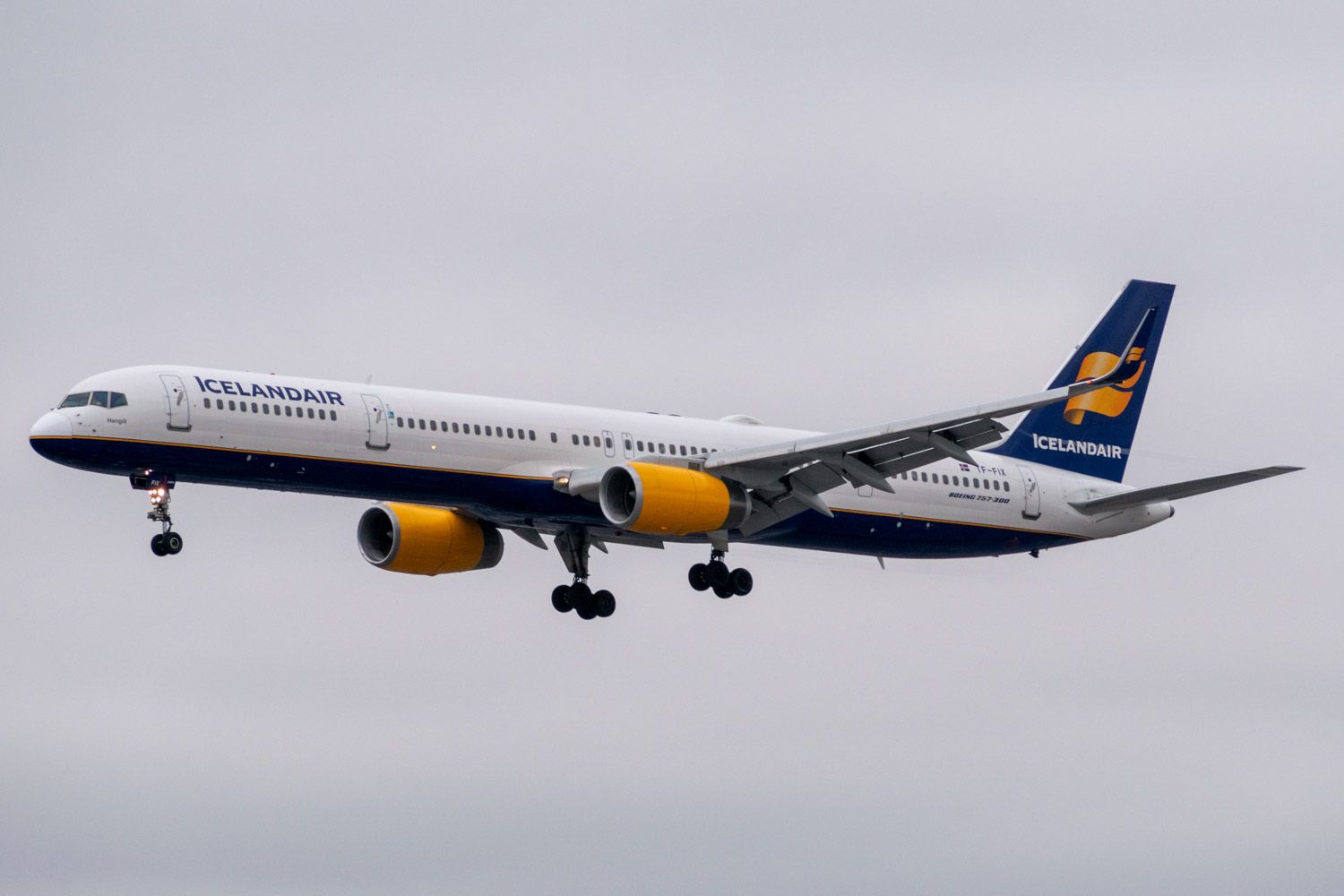While somewhat isolated from mainland Europe, the county of Iceland is very well connected in terms of its air routes. Indeed, its location in the middle of the North Atlantic Ocean means it can easily serve Europe and North America, with Icelandair being a key proponent of this strategy. Let's take a look at its fleet.
Boeing 737 MAX aircraft
Data from ch-aviation.com shows that, alongside five De Havilland Canada Dash 8s from Flugfélag Íslands that operate regional services, Icelandair's mainline fleet consists of 41 jet-powered aircraft. Just under 40% of these are planes from the Boeing 737 MAX family, with 16 examples present across two different variants.
The dominant force in this regard is the Boeing 737 MAX 8 variant, of which Icelandair presently has 12 examples at its disposal. 10 of these are currently listed as being active by ch-aviation (with the other pair in storage), and they have an average age of just 4.1 years old. Icelandair also has three more of these next-generation narrowbodies, which have 160 seats across two classes, on order.
Want answers to more key questions in aviation? Check out the rest of our guides here!
The Icelandic flag carrier also has four examples of the slightly larger Boeing 737 MAX 9 in its present fleet. These are even younger than the MAX 8s, clocking in at just 3.4 years old on average, although no more are on order. Their size is reflected in their capacity, which allows them to seat 178 passengers across two classes.
Golden oldies
As it happens, the Boeing 737 MAX series isn't the only one of the US manufacturer's narrowbody families that Icelandair deploys. Indeed, the national airline also has close ties to the 757, operating 20 examples in total. Two of these are cargo aircraft, and come in the form of one Boeing 757-200PCF and one 757-200PF.
Moving onto passenger-carrying 757s, the 757-200 is by far the most numerous at Icelandair. Indeed, the carrier has 16 examples of the type at its disposal, and, historically, it has flown another 17. However, with a considerable average age of 25.3 years old, Icelandair is beginning to consider how it might replace these jets. Most are configured to seat 183/184 passengers across two classes.
Get all the latest aviation news right here on Simple Flying!
As pictured above, Icelandair is also a rare operator of the stretched Boeing 757-300 variant, lovingly dubbed the 'flying pencil' by many avgeeks due to its long and thin design. The pair, of which one is active and the other is undergoing maintenance, have an average age of 22.1 years old, and have 225 seats across two classes.
Icelandair's only widebodies
Icelandair's other five aircraft are its only widebodies, and, as pictured at the top of the article, they come in the form of the Boeing 767 family. Much like the national airline's cohort of 757s, two of its 767s are cargo-carrying aircraft, and they specifically belong to the 767-300ER(BCF) variant. Their average age is 25 years old.
Meanwhile, Icelandair's three passenger-carrying examples of the Boeing 767-300ER are slightly younger, at 23.7 years old on average. Two are presently listed by ch-aviation as being active, while the third is undergoing maintenance. Historically speaking, the Icelandic flag carrier has operated another six examples of this twin-engine widebody, which it configures with 262 seats across two classes.
What do you make of Icelandair's present fleet? How many of its aircraft have you flown on? Let us know your thoughts and experiences in the comments!
Source: ch-aviation.com



